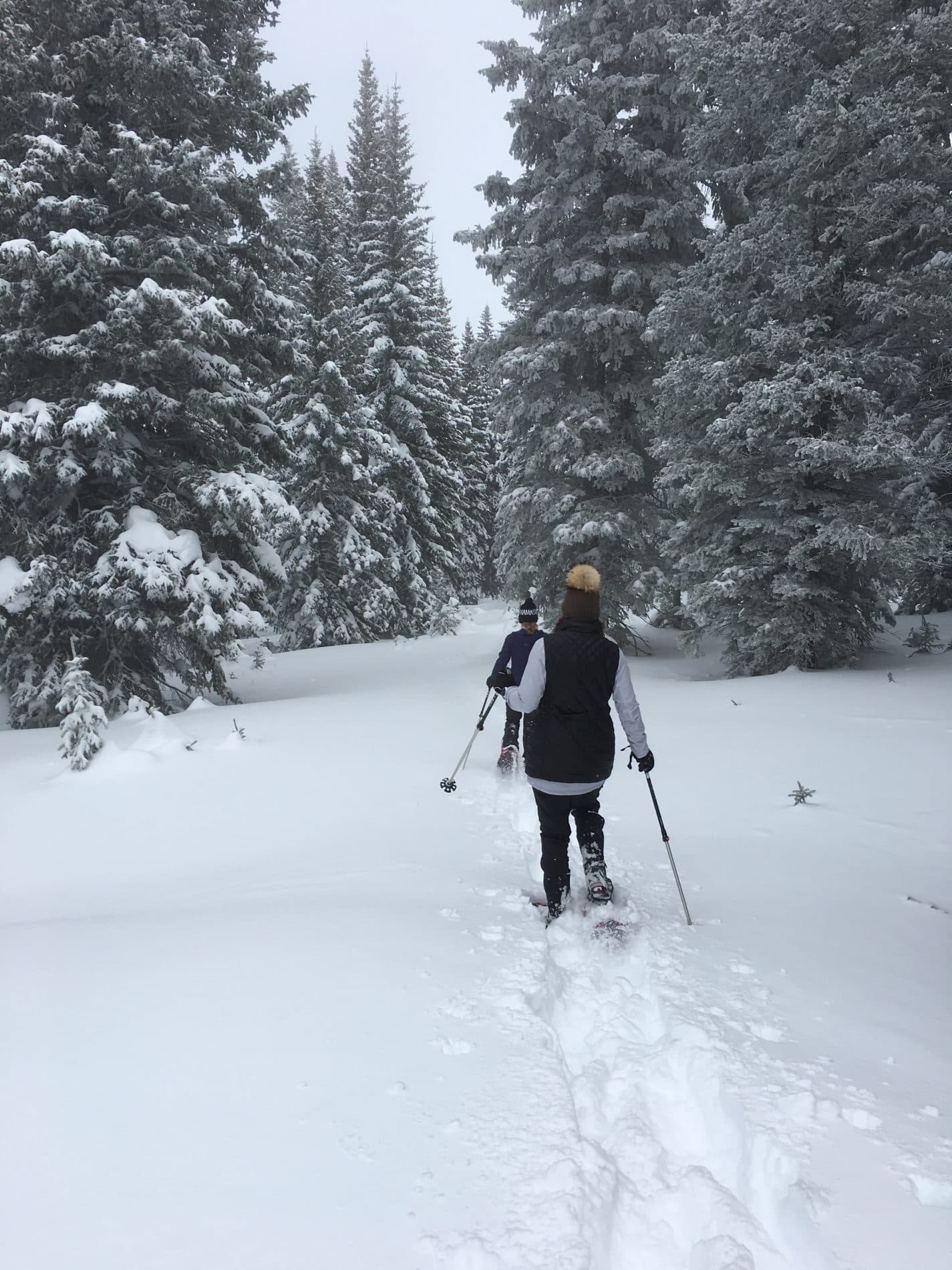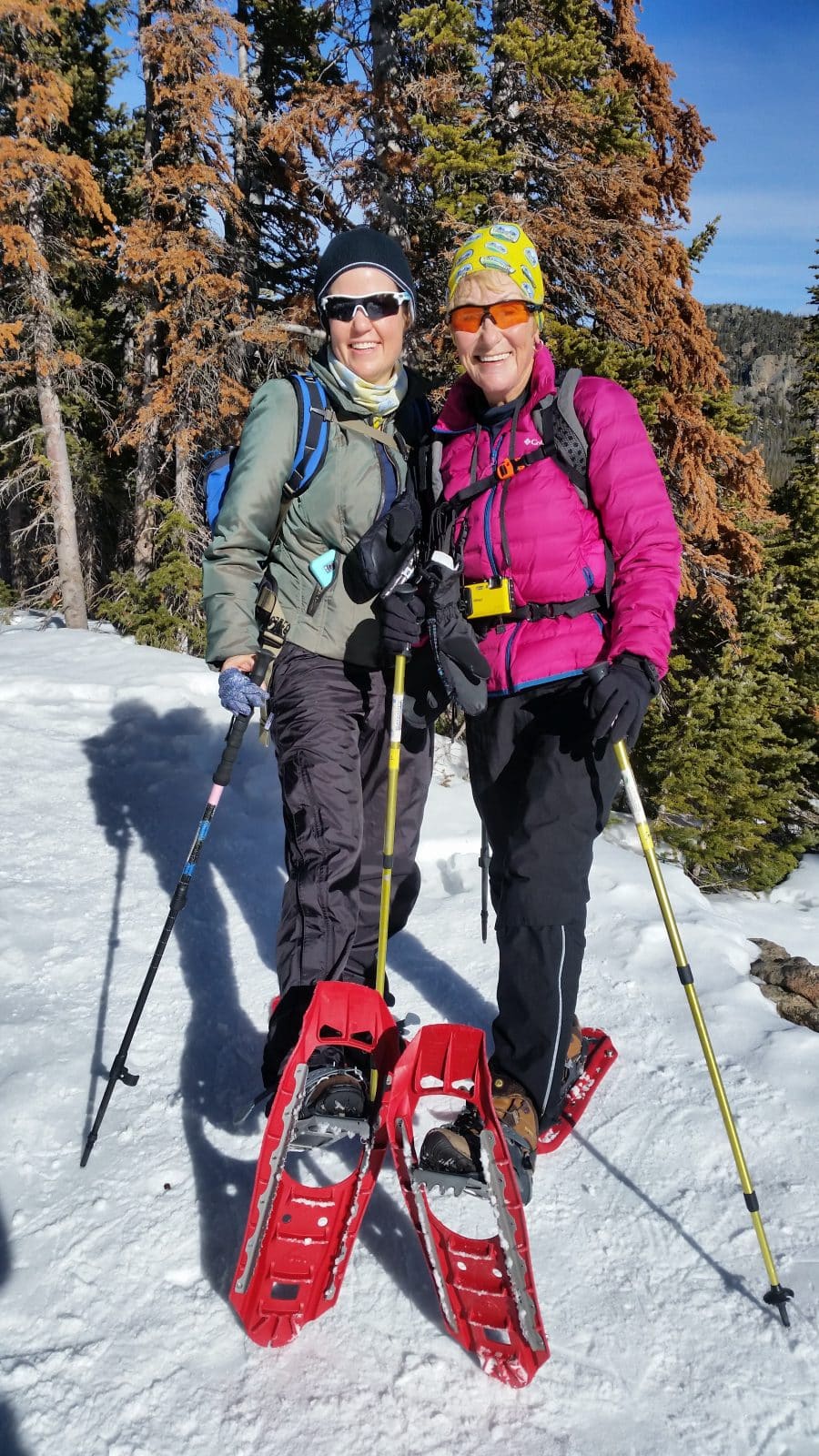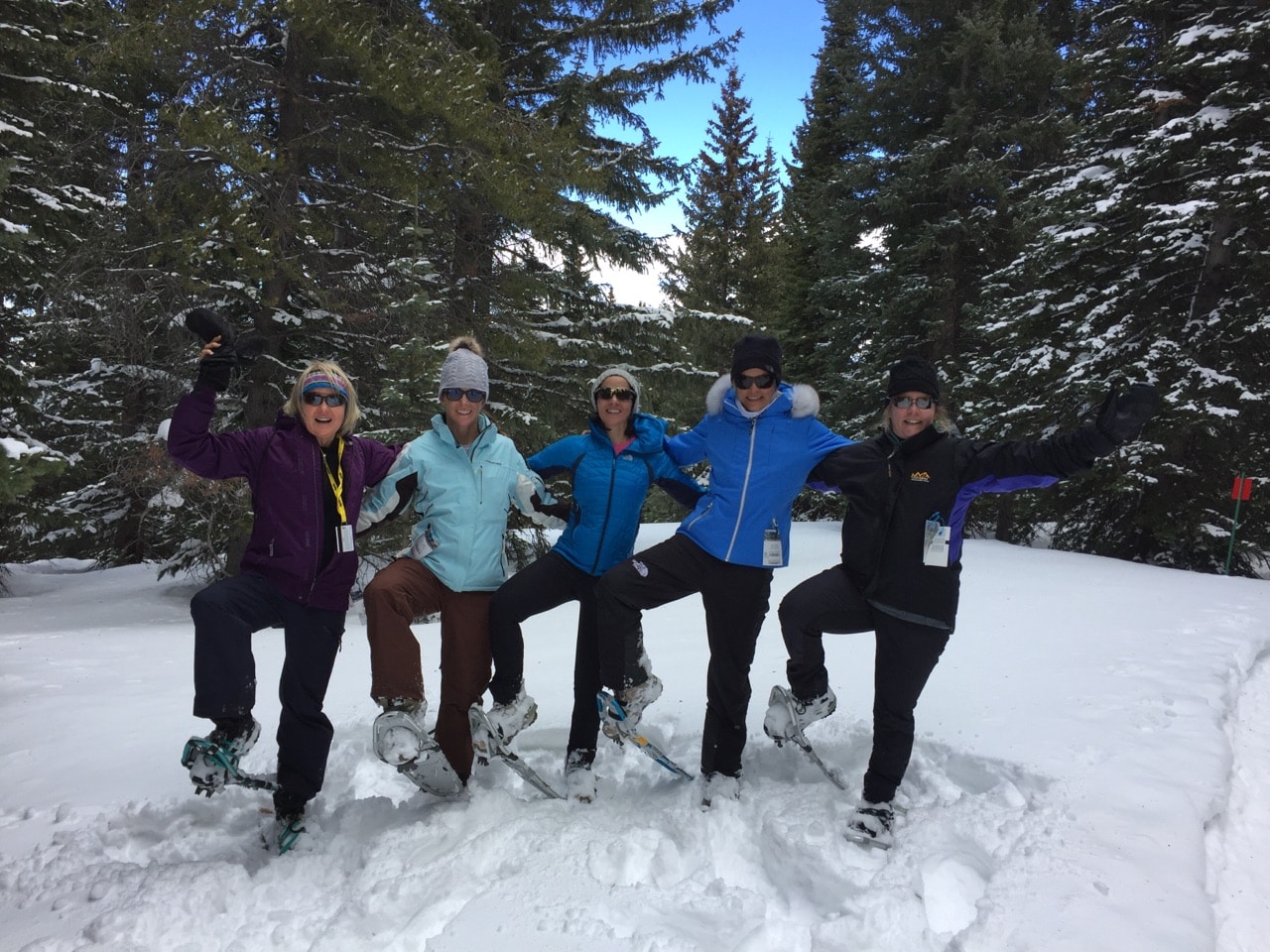AKA Snowshoeing 101
I’d like to share with you a few tips and tricks on how to snowshoe, making your first trip even more seamless. Snowshoeing is a great sport that anyone can pick up. It provides you the means to extend your hiking season, and introduces you to a winter wonderland that many are to hesitant to enter.
If the boot fits
To make your snowshoe tour the best possible, you need to start with the right clothing. For starters, boots will be most important. If you spend any money, this is what you should spend it on. Warm, waterproof, boots with thick soles and leather or rubber uppers are the best option. They should be snug (but not tight) fitting when you are wearing wool socks. You can use a hiking boot if it is a full, ankle height boot, it is roomy enough to wear warm wool socks, and you wear gaiters. Gaiters are a waterproof legging that covers your lower leg and down over your shoe, with a strap under your foot to keep the garment pulled tightly down onto your shoe. It will increase the waterproofness of your shoe and will prevent snow from dumping into your shoe at the ankle.
Layers, Layers, and More Layers
You will be exercising – and more on the uphills than the downhills, so layering is essential to keeping comfortable. Similar to hiking, you may find yourself stopping frequently to readjust your clothing – stripping down to one or two layers when climbing in the sun, adding a wind layer when the breeze picks up, and adding a warmth layer when coming downhill. Hands and head can also benefit from layering, starting with a lightweight glove or hat, and adding fleece, then a waterproof outer layer.
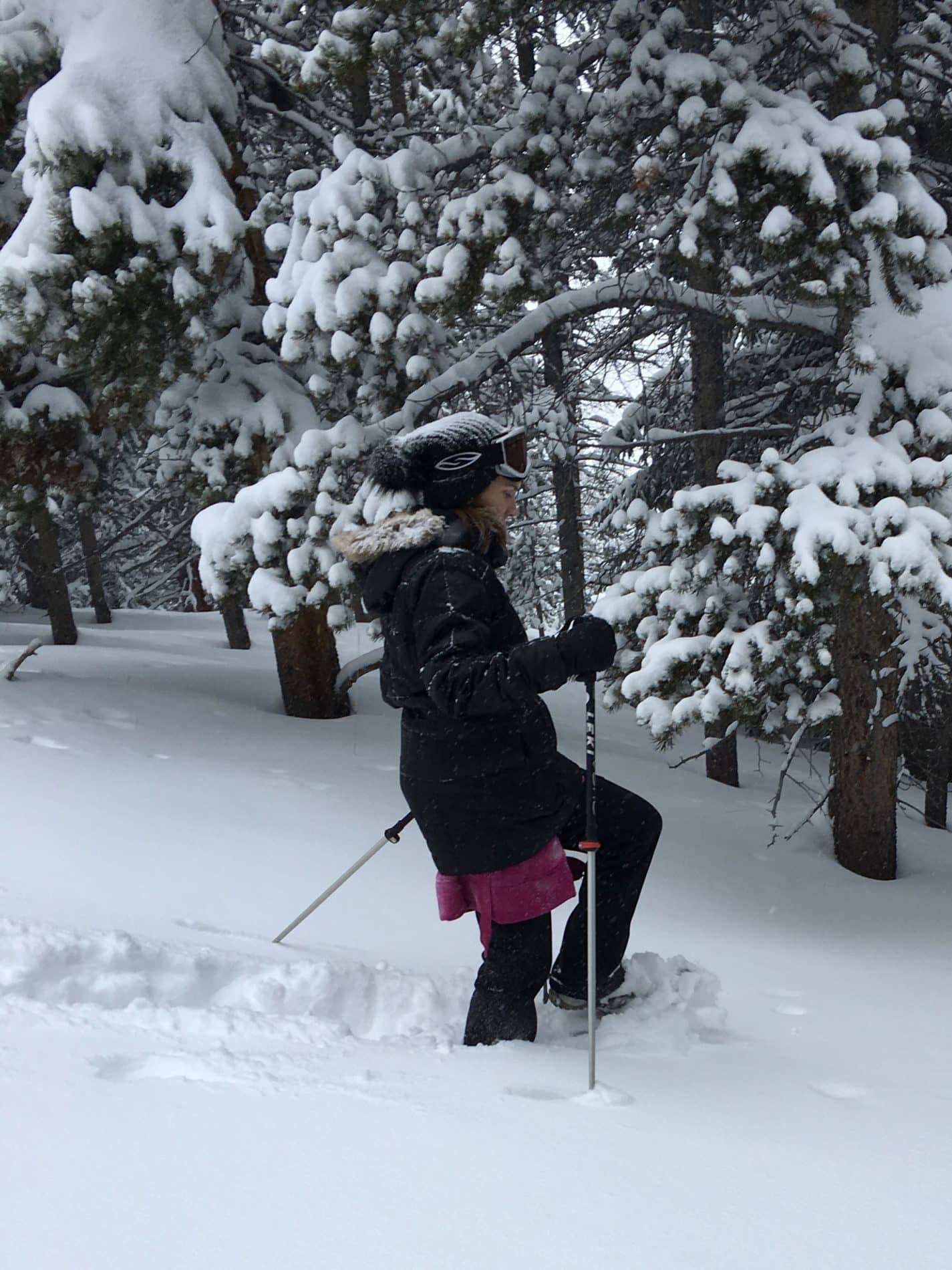

The Basics
Walking with snowshoes on your feet has gotten so much easier over the years. Snowshoes are lighter and smaller, and include a claw under the foot to help grab at the snow. Walking on flat will be almost normal. You may have a slightly wider stance, but not a lot. As you walk, try to glide one snowshoe over the other, keeping your stance as close to normal as possible. In deep snow, you’ll sink some with each step, so you’ll need to lift your foot more than normal. In a group, each person following the lead will find a more packed trail, making the walking easier.
Walking uphill requires a bit more calf work, as you will need to lean forward and push off from your toes. With more weight on the ball of your foot, the claw will grab the snow underneath and prevent downhill slipping. Coming downhill, you should walk heel first, and keep your weight back. If the snow is deep enough, your footsteps will be almost level as you sink in at the back. If the snow is thinner or more packed, your cleats will again keep you from slipping downhill.
Use Your Support!
Poles can be a huge benefit in snowshoeing, and are highly recommended. You will use them the same as for hiking. On the flats, a diagonal stride means you put the opposite hand and foot forward together. For the uphill you may want to shorten your poles as you reach in front of you. For the downhill, longer poles will help you reach your plant while still keeping your weight back. Just remember you need large baskets on your poles or they will sink too far into the snow and be useless.
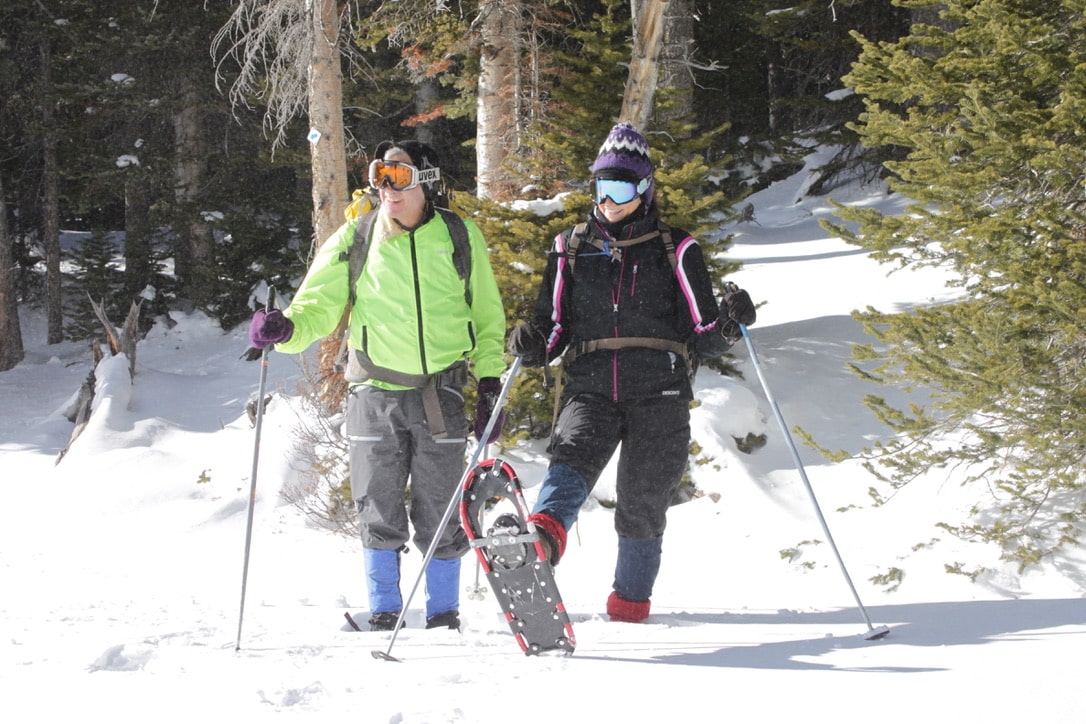
And the most important tip – just get out there and start having fun! A short trip for your first outing will show you what a great sport it is and will get you planning your next outing. If you want a great adventure with an expert to show you all the tips, we are running a snowshoe tour into Yellowstone National Park this coming January.
